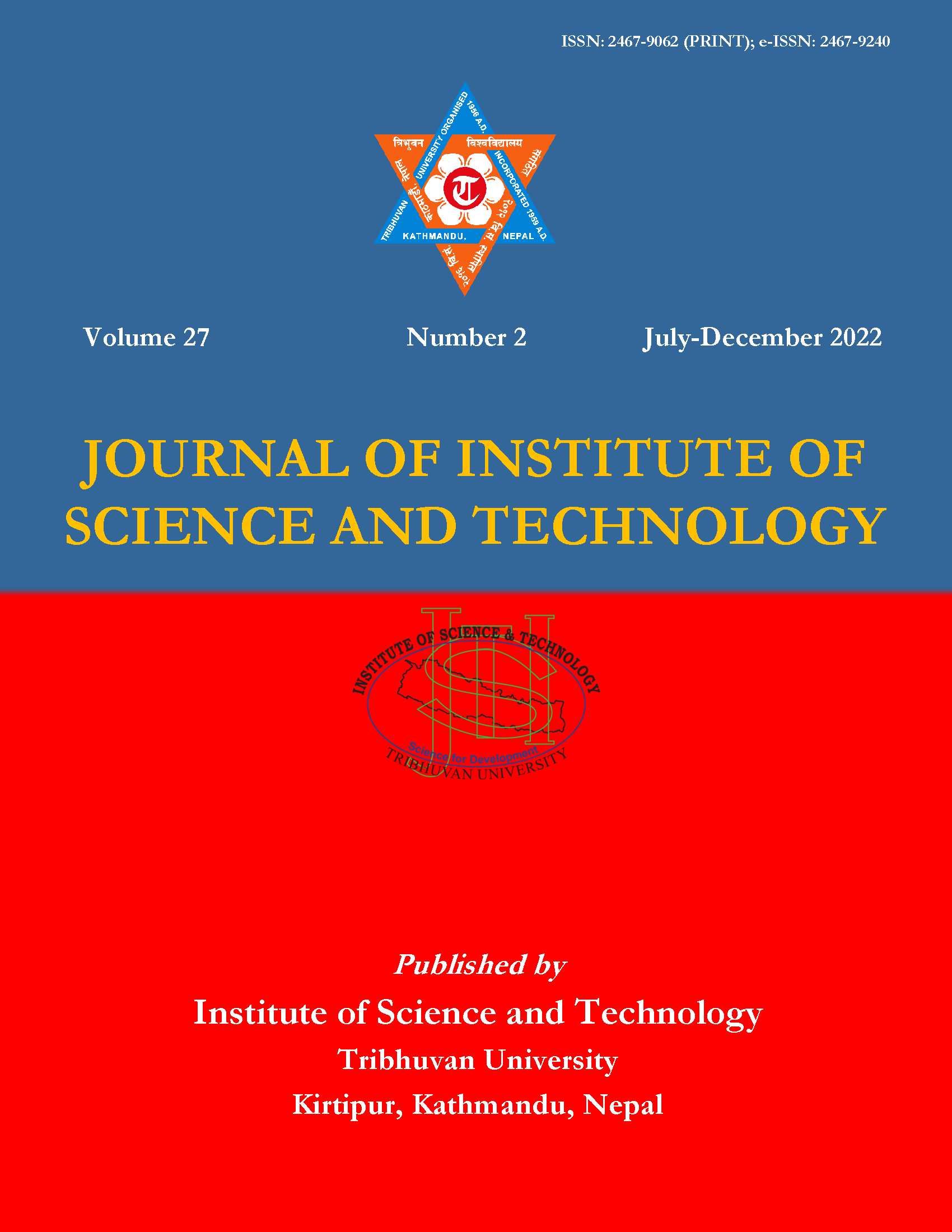Tree Species Diversity and Regenerating Potential along Disturbance Gradient in Chandragiri Hill, Kathmandu, Central Nepal
DOI:
https://doi.org/10.3126/jist.v27i2.49614Keywords:
Central Nepal, disturbance gradient, species diversity, temperate forest, regenerationAbstract
Tress species regeneration is greatly influenced by climatic, topographic, and anthropogenic activities. Present study was designed to examine the tree species diversity and their regeneration patterns along the anthropogenic disturbance gradient in the temperate forest of Chandragiri Hill, Central Nepal. Data were obtained from 90 sample plots ranging between 1560 to 2290 m asl after randomly sampling along three disturbance classes classified based on canopy coverage and degrees of disturbance activities in 2021. Circumference at breast height (1.37 m height above the ground) of each tree individual was measured and classified into tree, sapling, and seedling. A total of 47 tree species belonging to 42 genera and 26 families were obtained by this study. The highest species richness for seedlings and saplings was obtained in severely disturbed areas and tree species richness in the moderately disturbed area. The tree stands density varied between 350 to 1017 individuals ha-1 with the total basal area between 12.7 to 72.78 m2 ha-1 with the least value in a highly disturbed area and highest in the least disturbed area. The seedling and sapling densities were found increased from lower to more disturbed forests indicating that the forest fragmentation negatively affected the regeneration. The highest values of the Shannon Weiner index, Pielou Index, and the lowest value of the Simpson index were observed at moderate disturbance areas. About 36 to 60% of species were found regenerating in the less disturbed and moderately disturbed forests and no regeneration in severely disturbed areas. Elevation, canopy cover, landslide, and slopes were found to be the most influential variables in forest regeneration as significantly represented by CCA1. The present study has found a moderate level of disturbance to become beneficial for better regeneration of tree species. So, the reduction of excessive disturbance from local people would be a better option for the adequate regeneration of tree species.
Downloads
Downloads
Published
How to Cite
Issue
Section
License
Copyright (c) 2022 Institute of Science and Technology, T.U.

This work is licensed under a Creative Commons Attribution-ShareAlike 4.0 International License.
The views and interpretations in this journal are those of the author(s). They are not attributable to the Institute of Science and Technology, T.U. and do not imply the expression of any opinion concerning the legal status of any country, territory, city, area of its authorities, or concerning the delimitation of its frontiers of boundaries.
The copyright of the articles is held by the Institute of Science and Technology, T.U.




